Keyboard Works on Login Not After Mac Updated FREE
Keyboard Works on Login Not After Mac
Your MacBook Pro keyboard commonly does not work due to dirt or debris over it. It can also stop working due to an outdated macOS. In almost all cases, the trouble doesn't seem to be with the software and are usually temporary.
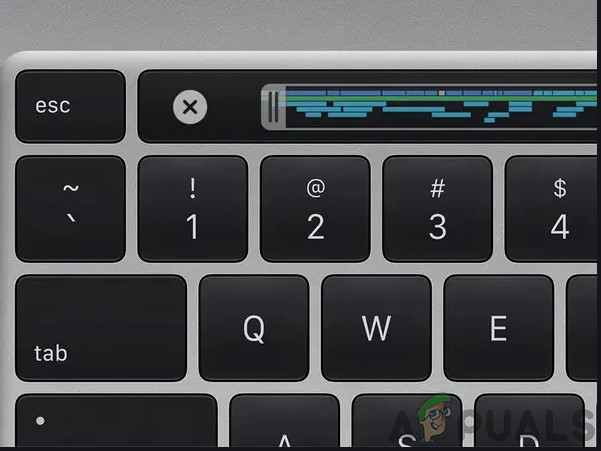
In this article, nosotros volition target the scenario of the in-built keyboard not working. If you are having problems connecting with an external keyboard, you can refer to troubleshooting that connection.
How to Fix MacBook Pro Keyboard Issues?
Earlier trying whatsoever solutions
- Check if "speak selected text when the key is pressed" is non enabled in Speech communication under Accessibility Setting.
- Make sure you are not using your Mac in also much cold, hot or humid environment.
- Check if Input Sources under Language & Text in System Preferences matches your language i.eastward. information technology should exist US Input Source if you are using US English language.
- Make sure that mouse keys are off under Universal Access in Organisation Preference.
- Plow off file vault under Security and Privacy in System Preference.
Power Cycling your Macbook
Before we attempt any other solutions, we will start power cycle your Macbook completely and encounter if the problem goes away. Power cycling is an act of completely restarting your figurer by powering information technology off completely. This will reset any temporary configurations which may accept gone bad and are conflicting with the internal mechanisms of the computer.
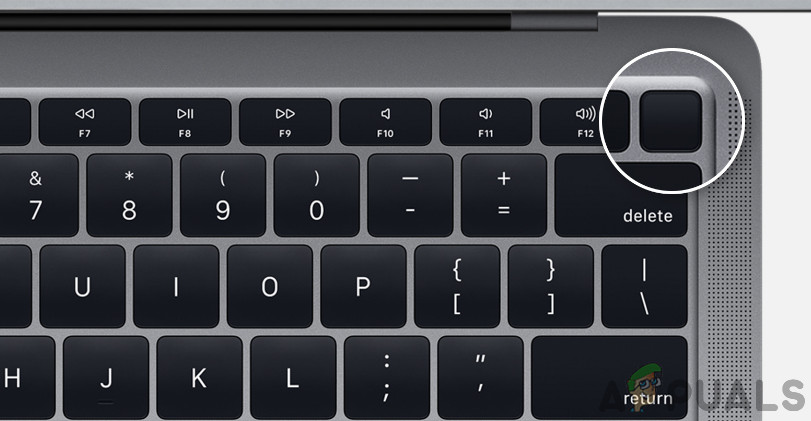
Power off your Mac and remove devices such as external drives, iPod/iPads, printer, etc. Nothing should exist attached to your Mac. And then power on your Mac unremarkably and then check if the keyboard is working as expected.
Also, make certain at that place is no external magnetic interference around your Mac. We came across one example where Bose Revolve portable speaker's magnetic interference was causing issues with the Macbook's keyboard (if placed too shut with it). It will also be a adept thought to movement your Mac outside the range of the Wi-Fi that it is connected to.
Checking Available Space and RAM
Another thing which may cause problems with your keyboard is the amount of available space on your computer. Even though there is no straight relation between space and your keyboard, we came across instances where because of depression space, the Macbook was not able to connect with the keyboard properly and hence was causing issues. In that location should be enough free space equal to almost one/quaternary of your full hard-disk size.

Also, make certain that you accept enough costless RAM on your computer. If there are numerous applications running in the background which may be hogging your computer, close them 1 by ane and and then cheque if the issue is resolved for skilful.
Clean Macbook and its Keyboard
The start pace in troubleshooting this upshot should be to make clean your keyboard. Your trackpad & keyboard can easily be broken by a bit of dust that got inside it. You can use compressed air to remove any crumbs or $.25 of droppings from the Mac.
- Make sure in that location is nothing like newspaper etc. is not sticking out of the vent. You may use a vacuum to clear the vent.
- You can use a hairdryer (set to cold setting) and blast it all around the keyboard and trackpad.
Turn off Bluetooth of Your Mac
If the Bluetooth of your MacBook is switched on, and so due to a software glitch your MacBook starts to "recall" that Bluetooth keyboard/trackpad (or iMac) is nearby and thus stops the performance of the built-in keyboard. Fifty-fifty if you open keyboard/trackpad preference, you lot will see Bluetooth window, non onboard keyboard/trackpad settings. In that example, turning off Bluetooth for your arrangement may solve the problem.
- Open up System Preferences of your MacBook.
- Then click on Bluetooth.
- Now click on Plow Bluetooth off.
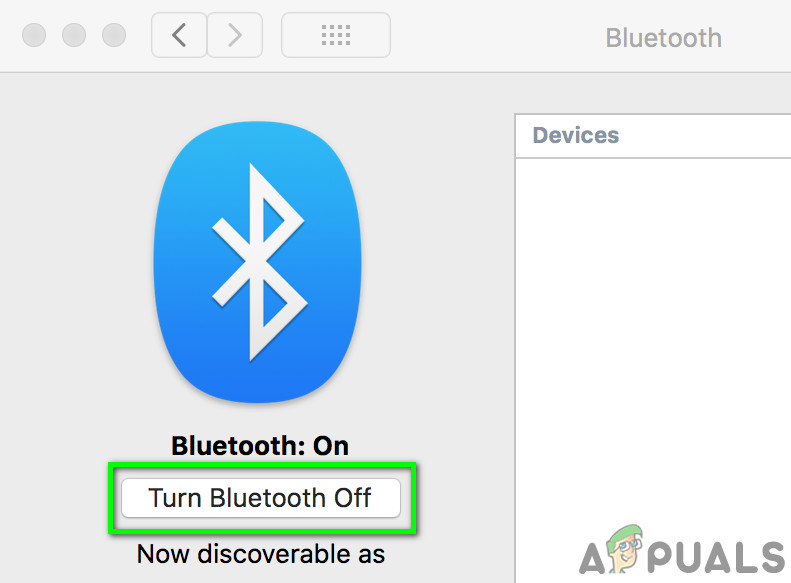
Turn Off Bluetooth - Now check if the keyboard issue is resolved.
Reset SMC (System Management Controller) of Your MacBook
Resetting SMC should be one of the primary steps in troubleshooting your Mac every bit it can solve a lot of bugs and performance issues.
- Power off the MacBook.
- Plugin your MagSafe adapter to the Mac and power source.
- At present press and hold Shift, Control and Option buttons simultaneously for 7 seconds.
- Then keep holding these three buttons, printing the Ability button.
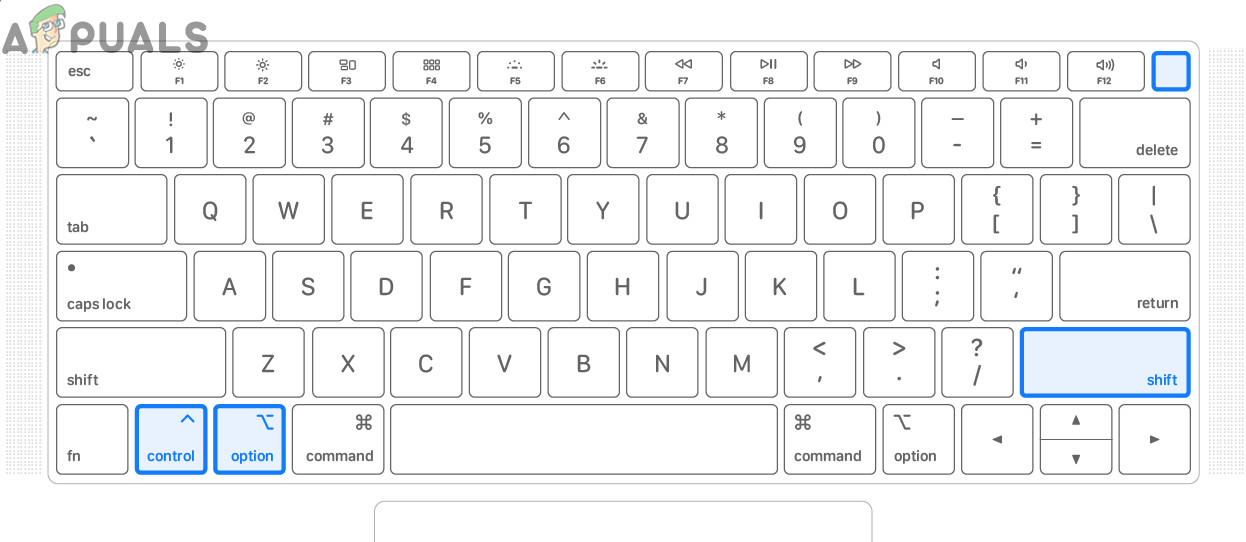
Press Shift-Control-Option & Power Buttons - Wait for some other seven seconds and then release all 4 buttons at once.
- At present wait for 5 seconds and then press the ability button to power on your Mac.
- After the organization has powered on, check if you can use the keyboard normally.
- If y'all are using a Mac with a removable bombardment, then unplug the bombardment and and then try to reset SMC.
Reset PRAM/NVRAM of Your MacBook
NVRAM and PRAM memories are used by macOS to store settings and temporary information. macOS switches betwixt the two types of memories while operating. Nevertheless, if these memories could not perform their operations properly, then your Mac's keyboard/trackpad may finish working. In that case, resetting NVRAM and PRAM may solve the trouble. Just keep in mind that in some cases, your preference will be erased.
- Power off your MacBook (not sleep or logout).
- Now power on your MacBook while holding the following keys simultaneously.
choice + command + P + R
- When you will press these keys, the MacBook will start booting.
- You may release the keys if
- If you hear the startup (chime) sound second fourth dimension (the outset ane will be when the MacBook is powered on).
- If yous are using a MacBook with Apple T2 Security Chip, then release the keys when Apple Logo appears
- In both cases, information technology unremarkably takes nearly xx-30 seconds earlier you can release the keys.
- Afterwards the MacBook has started, bank check if the keyboard is working fine.
Restore macOS to A Previous Appointment
If the keyboard problem has started to happen recently after a system change or installation of a new software/utility/driver, then restoring the MacBook through Fourth dimension Auto may solve the problem.
To restore your Mac to an earlier engagement, follow out the article on How to: Restore Mac to the Previous Date. You can also use the recovery way of Mac to restore information technology.
After completion of the restore process, check if the keyboard is working fine.
Upgrade/Update macOS to the Latest Build
Outdated MacOS tin can leave your system exposed to many vulnerabilities. Moreover, known bugs are patched in newer releases of the OS. Perchance the issues causing the keyboard effect has already been patched in the newer release of the Os. In that case, updating macOS to the latest version may solve the trouble.
- Redundancy all the essential data to an external location/device.
- Open System Preferences on Your MacBook.
- Now click on Software Update to check if there are any updates bachelor.
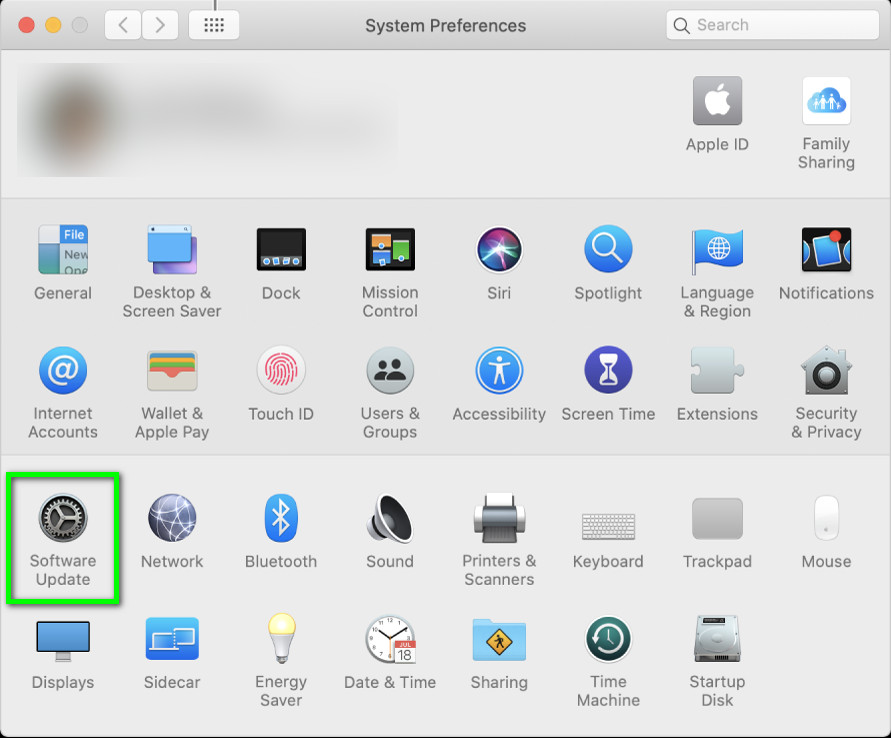
Open Software Update in Arrangement Preferences - If updates are available then click on Update At present.
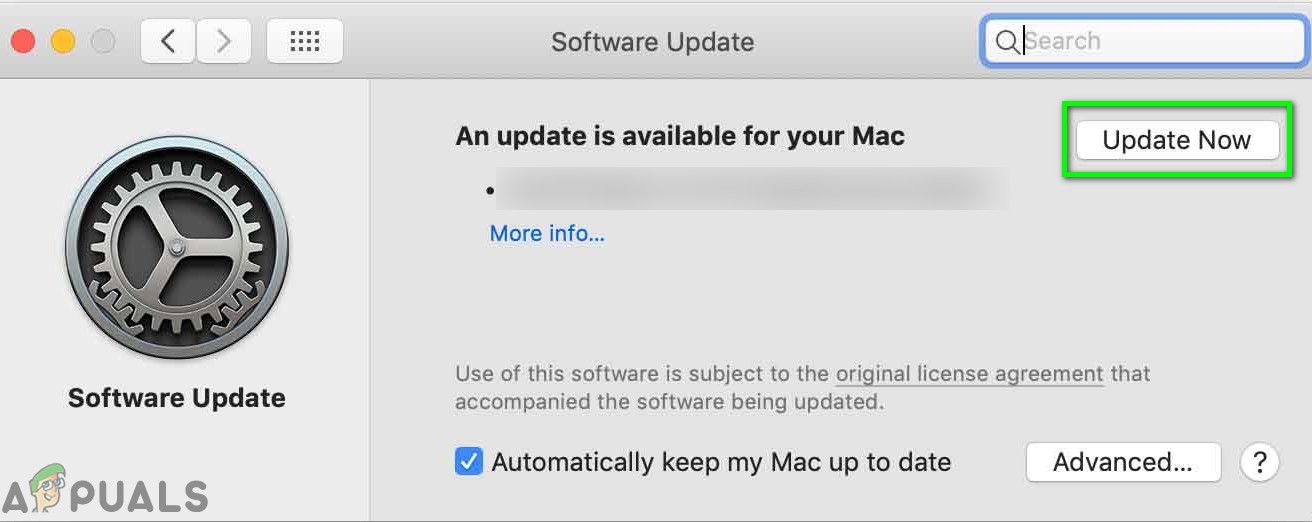
Click Update At present in Software Update - After completion of the update process, check if the keyboard is working fine.
Boot MacBook in Safe Mode
If the keyboard issue is occurring due to any of third-party applications/drivers, then booting the system in safe fashion (in which your system loads without any 3rd-party applications/drivers) will be a good thought to rule out the possibility. Also, if a firmware update past Apple is released to troubleshoot the keyboard outcome but sometimes the same could not be loaded until the organisation is booted in prophylactic mode.
- Power off your arrangement.
- Turn on the system and immediately press & hold the Shift key.
- When the login window appears, release the central. You lot should run into Prophylactic Mode in the top right corner of the window.
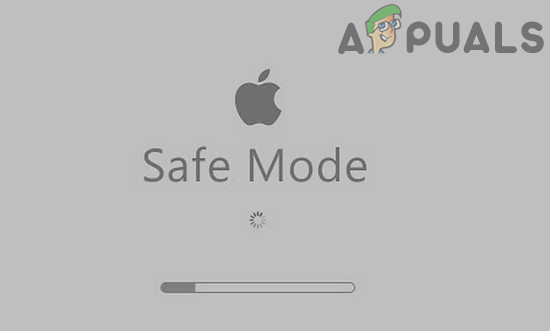
Boot MacBook in Condom Manner - Now login to your system and check if your keyboard is working fine.
- If so, then restart your organisation normally and cheque if the keyboard is working fine. If not, and then your Mac's startup items may be the root cause.
- To manage your startup items, open up your Mac's Organization Preferences .
- Now open Users and Groups and then, at the bottom left, click on the lock button (enter your password if prompted).
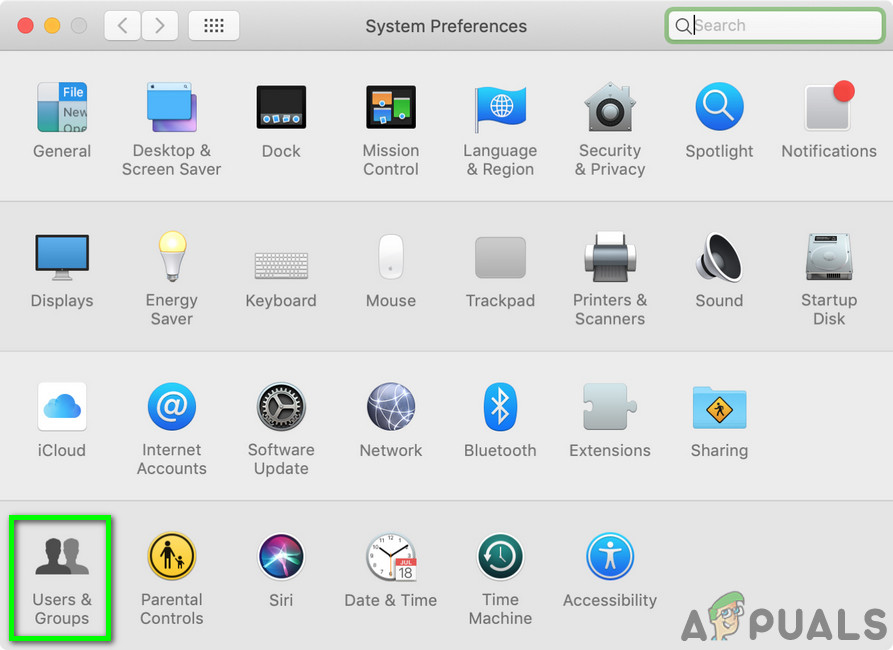
Open up Users & Groups in System Preferences - Now move to the LoginItems tab.
- Select the item that y'all suspect to exist the reason for the result and then about the lesser-left of the carte, click on the minus (-) button. I such application is MacKeeper.
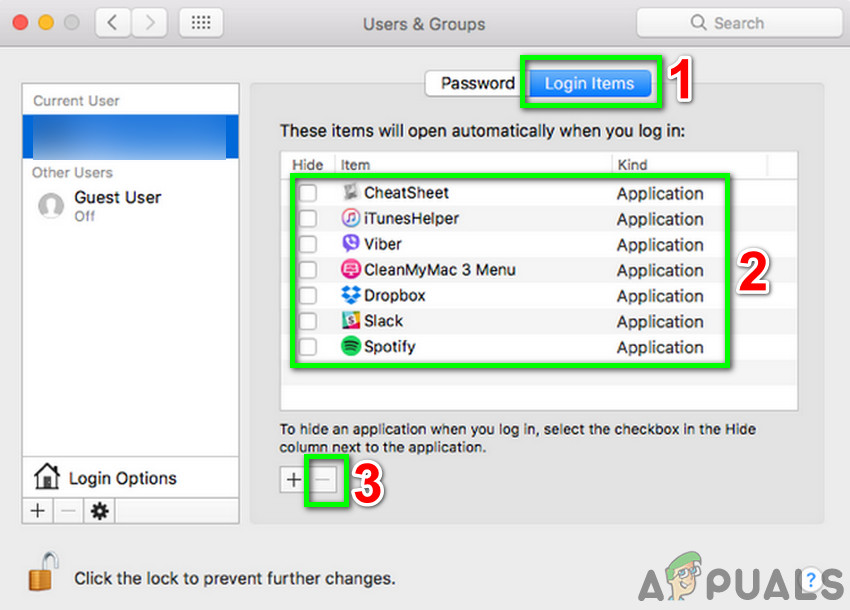
Remove Startup Items in MacBook - Now restart your Mac and check if the keyboard is working fine.
Repair the Disk of Your MacBook
A corrupted disk can also exist the reason for the keyboard in your Mac not working. In that case, repairing the disk may solve the problem. Disks commonly get bad sectors or go issues with data allocation during operation. The repair functionality automatically scans all your drives and searches for abnormalities.
- Backup your essential data.
- Ability off your MacBook.
- Power on your MacBook and immediately press and hold Command+R.
- Now in the macOS Utilities carte, select Disk Utility.
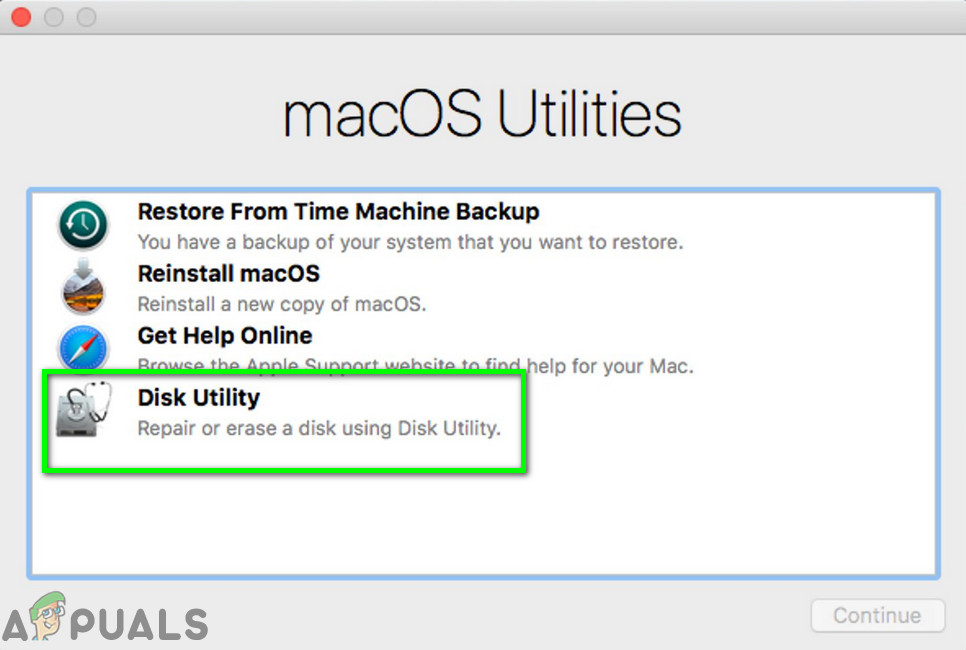
Open Disk Utility - Then in the Disk Utility, select the disk that you desire to repair (usually your system partition is labelled equally Macintosh Hard disk) and and so select Repair Disk.
- After completion of the disk repair procedure, exit MacOS Utilities Menu.
- Then restart your MacBook usually and check if the keyboard is working fine.
Utilise Another User Account to Log in the MacBook
The keyboard issue you lot are facing could be the outcome of a corrupted user business relationship. In that case, either apply a guest log-in or create some other user account with authoritative privileges. After logging in the account, bank check if the problem is solved.
- Open up System Preference of your Mac.
- Now click on User & Groups and so click on the Lock push button to unlock it (enter your password if prompted).
- Y'all can either enable Allow guests to log into the computer.

Let Guests to Log in to This Figurer - Or you can click the plus (+) push (below the list of users) to add a new user. In the type of user, choose Administrator.
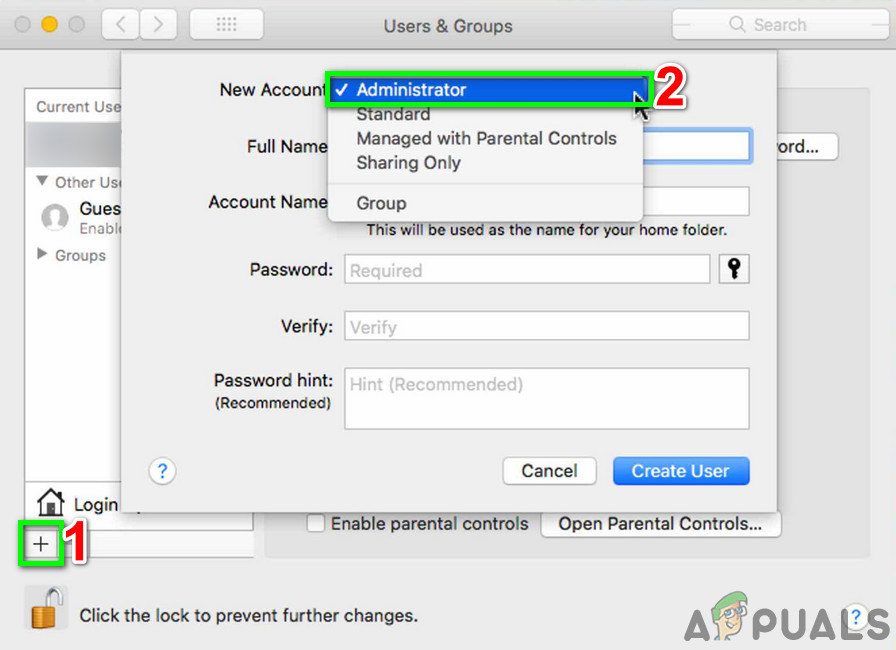
Create a New Administrator User in MacBook - At present logout of the current user and login through the other account (either guest or administrator) and check if the keyboard is working fine.
- If so, then log dorsum into the old account and bank check if it is working fine, if not, and so transfer your data to the newly created administrator business relationship and use Mac through that business relationship.
Delete the Property Listing (.plist) Files
The malfunction of your keyboard could be the result of misconfiguration of a setting. In that case, resetting them to factory defaults may solve the problem. To reset settings, you take to either delete the Property List (.plist) files or move them to another location.
- Backup your essential data.
- On your Mac, launch Finder.
- Now press Command+Shift+G.
- And then enter ~/Library/Preferences/ and click Get.
- Move these files out of the folder.
apple.driver.AppleBluetoothMultitouch.trackpad.plist - Magic Trackpad com.apple.driver.AppleBluetoothMultitouch.mouse.plist - Magic Mouse com.apple tree.commuter.AppleHIDMouse.plist - wired USB mouse com.apple tree.AppleMultitouchTrackpad.plist com.apple tree.preference.trackpad.plist
- At present restart your Mac and bank check if the problem is solved.
Some Flukes Reported by Users
At present earlier moving to more intense solutions, let united states of america try some flukes reported by users.
- Completely drain the battery of your MacBook and leave it overnight without charge. Next day plug the power supply to MacBook. Then power on the MacBook and check if the keyboard is working fine.
- Simply boot your system into recovery mode and check if the problem is solved.
- Restart your MacBook and hold Caps lock during the boot process till you see the login screen. So check if the problem is solved.
- Open up your MacBook's system preference. Then click on Startup Disk. Now click on the lock icon to unlock the setting. Then select your internal Macintosh HD and restart your system.
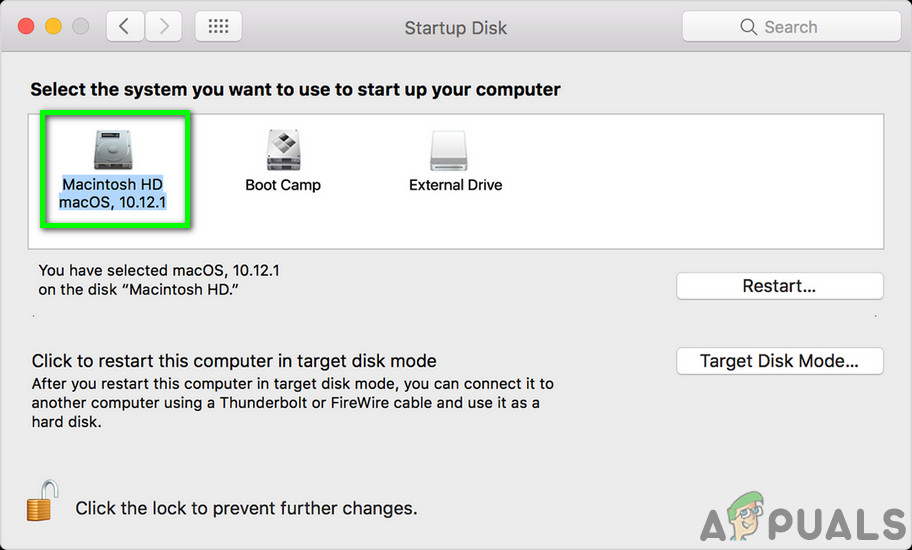
Select Mactonish Hard disk as Startup Disk
Reinstall macOS Through Recovery Menu
If nothing has helped you, then it is fourth dimension to Reinstall macOS through the recovery carte du jour. Do annotation that this will erase all your user information so make sure that you back everything upwards earlier proceeding.
- Fill-in your essential data.
- Power off your MacBook.
- Power on your MacBook while property the Command and R keys.
- In the Utility Carte, choose Reinstall and then click on Continue.
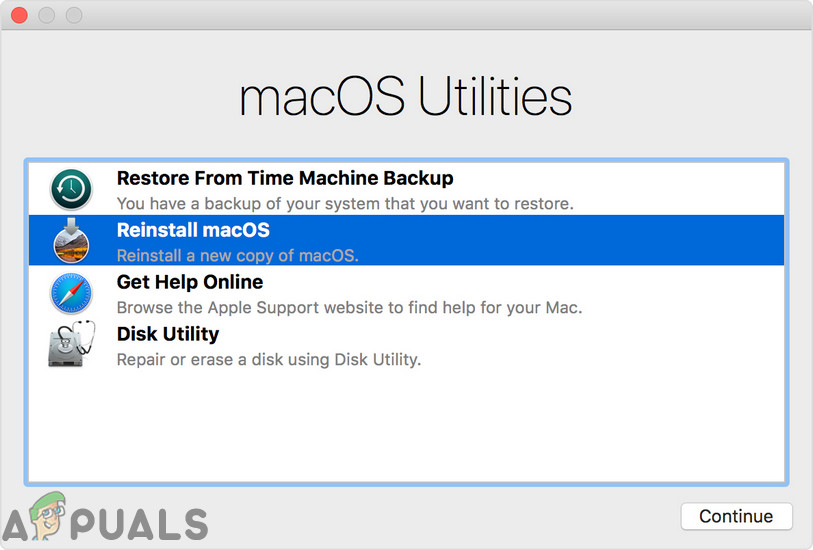
Reinstall macOS - Now follow the instructions on the screen to consummate the re-installation process and then check if the keyboard is working fine.
If nothing has helped you, then your only option left in software troubleshooting is to erase all information and install macOS.
If Upshot is Hardware Related
If nothing has helped you so far, the upshot you have encountered has may be occuring due to hardware failure. The first footstep in troubleshooting the hardware issue is to run a diagnostics on your Mac.
- Ability off your MacBook.
- Then power on your MacBook while holding the D cardinal.
- If any error/mistake lawmaking is reported by your MacBook, then try to find the solution for that particular error/error code (although many hardware issues are not reported).
The Faulty Flex Cable/Ribbon
This error is known to ascend from the faulty cable that connects the keyboard to the logic board. In some cases, the following steps helped users:
- Ability off your MacBook.
- Turn information technology over and massage the bottom of the MacBook "gently" with the palm of your hand. Yous may hear one or 2 squeaky sounds.
- Power on your MacBook and check if the problem is solved.
Insulate the Faulty Cable
In some cases, users accept reported that adding a spacer/ cord insulation (Due east tape tin also be used) betwixt the body of the MacBook, its battery and the faulty cable has solved the consequence.
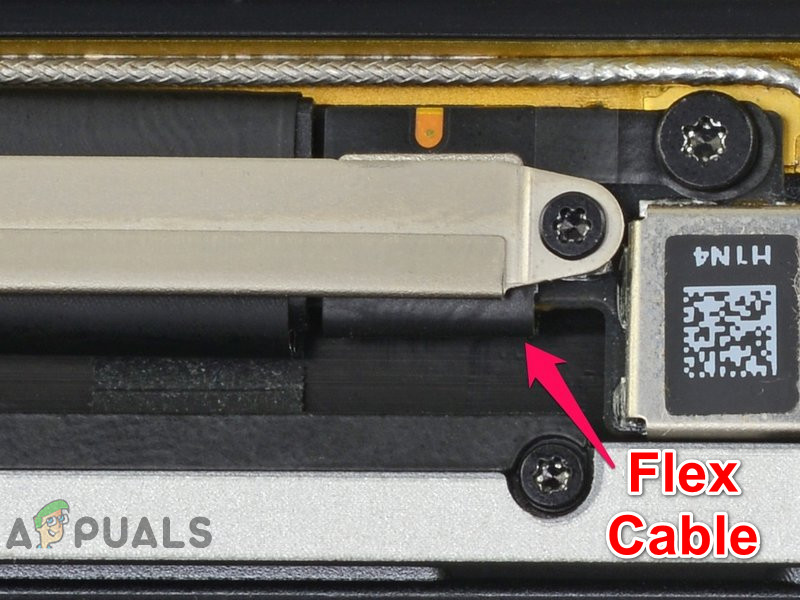
Hardware Repair of Your MacBook
Although you can social club the flex cable online, but, if you lot do not take technical expertise, then yous will take to find someone who can replace the flex cable for you.
If not, so it is time to visit Apple or whatsoever of its authorized repair center for maintenance.
Keyboard Works on Login Not After Mac
DOWNLOAD HERE
Source: https://appuals.com/macbook-pro-keyboard-not-working/
Posted by: bardthinted.blogspot.com